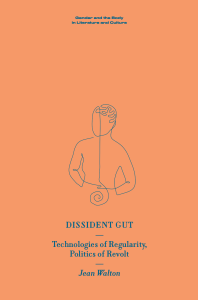John A. Carranza // On September 19, 2019, the website Motherly posted an article entitled “These Birth Photos Prove How Beautiful Clear Drape C-Sections Can Be.” Heather Marcoux, the author, explained what “gentle cesarean sections” are and how they have come to transform the cesarean section procedure in contemporary medicine. Previously, the operation included physicians and operating room staff placing an opaque sheet between the pregnant woman’s line of sight and the surgical incision, obstructing her view. However, in more recent years, there has been a movement to make cesarean sections more like vaginal births (but are not replacements as such) by allowing women to see her baby’s first moments and to initiate immediate skin-to-skin contact. For many advocating for “gentle c-sections,” this is a remedy to what is often seen as a cold surgical procedure that also returns patient choice to the woman. What the articles do not discuss is the presence of risk that undergoing a cesarean section entails. Perhaps this is because the operation has become so common that many women and their families are aware of the accompanying risks.
Public knowledge about cesarean sections, much less the option of undergoing one, was not always prevalent in the US. The same can also be said about the risk associated with the procedure. These are just two aspects of the complicated history of c-sections that Jacqueline H. Wolf explores in her book, Cesarean Section: An American History of Risk, Technology, and Consequence (2018). The book’s sweeping research traces the history of cesarean sections in the US from the nineteenth to the twenty first century while emphasizing the risk and use of technology associated with performing these surgeries. For Wolf, the rise of the cesarean section was crucially intertwined with how the medical community—predominantly men—made decisions about the health of a baby based on technology available to them at the time.
In the first two chapters, Wolf outlines the risk associated with cesarean sections. Beginning in the nineteenth century, the reader learns that good birth outcomes were generally widespread. Doctors were unwilling to place the mother’s life at risk for the sake of the baby’s, so when a complication did occur, forceps were applied to avoid a cesarean section. Depending on the severity of the situation, doctors would prefer to perform craniotomies rather than place the mother’s life in danger. However, as medical knowledge about anesthetics and infection became better into the twentieth century, the “science” of pelvimetry, or the measurement of pelvises to determine anomalies, grew in acceptance among physicians. As a result of these developments there was a slight increase in cesarean births, even though physicians still carried some reservations about performing the surgery. Physicians and their reservations over the benefits and dangers associated with cesarean sections is one of the more interesting aspects of these two chapters. While doctors maintained a restrained approach to the surgery, other developments in the technology surrounding birth were developed and utilized.
In the next three chapters, the reader sees that the shift in attitudes toward cesarean sections began in the 1950s as popular media such as women’s magazines published articles on the procedure. Nevertheless, Wolf attributes widespread visibility of the surgery to the cesarean sections that Jackie Kennedy underwent while John F. Kennedy was President. The notoriety of the Kennedy family focused attention not just on the policies of the administration, but also on the reproductive capacities of First Lady Jackie Kennedy. The attention focused on the First Family and the coinciding rise in new diagnostic techniques (Apgar scores, for example) and technologies to monitor infants (ultrasound and electronic fetal monitoring) combined to add to the notion that risk could be found before the birthing process, thus ensuring that a cesarean section would be needed. What makes these chapters so compelling is that Wolf makes these connections seamlessly with the popular and technical evidence she had available to her. This use of sources underscores the ways in which both laypeople—specifically pregnant women and their families—and the medical community understood the uses of cesarean sections and the associated risks.
More compelling, as the book comes to a close in the final two chapters, is the detailed exploration of women’s responses to cesarean section. This is a welcome remedy to the minimal voice given to women throughout the rest of the book. These chapters show how pregnant women were sometimes at the mercy of a medical community that was losing its ability to confidently handle emergent situations without resorting to cesarean sections. Furthermore, with the dawn of the twenty-first century, increasingly busy women in the workforce found relief in the option of scheduling birth and reducing pain.
Wolf’s Cesarean Section is a compelling study of the procedure in the history of medicine. Her skillfully balanced monograph makes extensive use of a number of primary sources. The book is accessible thanks to chronological chapters, as well as a glossary of medical terms that do not jar the reader out of the narrative with clunky definitions. This book could easily be used in a history of science and medicine course due to its accessibility.
Finally, whether gentle c-sections become prevalent in the future (hospitals have differing operating procedures and rules regarding the procedure), this next step is one in a long history of cesarean sections that have revolutionized the birthing process in the United States, and could easily be used as an addendum to Wolf’s work.
Works Cited
Marcoux, Heather. “These Birth Photos Prove How Beautiful Clear Drape C-Sections Can Be.” Motherly, Motherly, 18 Sept. 2019, http://www.mother.ly/news/these-powerful-photos-let-us-see-how-beautiful-clear-drape-c-sections-can-be.
Wolf, Jacqueline H. Cesarean Section: An American History of Risk, Technology, and Consequence. Johns Hopkins University Press, 2018.



